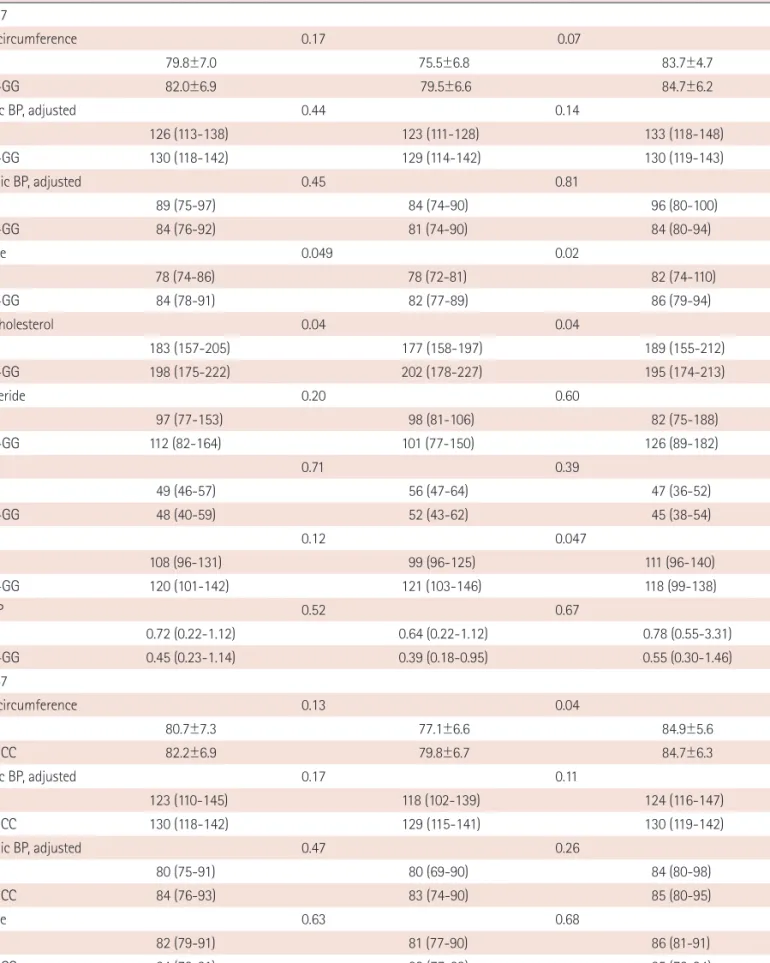Korean Circulation Journal
Introduction
The pathogenesis of essential hypertension is believed to be mul- tifactorial and under the influence of multiple genetic and environ- mental factors. Genes associated with blood pressure (BP) are not sufficiently known as yet. A recent genome-wide association study
Print ISSN 1738-5520 • On-line ISSN 1738-5555
Association between Serine/Threonine Kinase 39 Gene Polymorphism, Hypertension, and Other Cardiovascular Risk Factors in Koreans
Dong-Jik Shin, PhD 1 , Sang-Hak Lee, MD 2 , Sungha Park, MD 2 , and Yangsoo Jang, MD 2
1
Cardiovascular Genome Center, Yonsei University Health System, Seoul,
2

